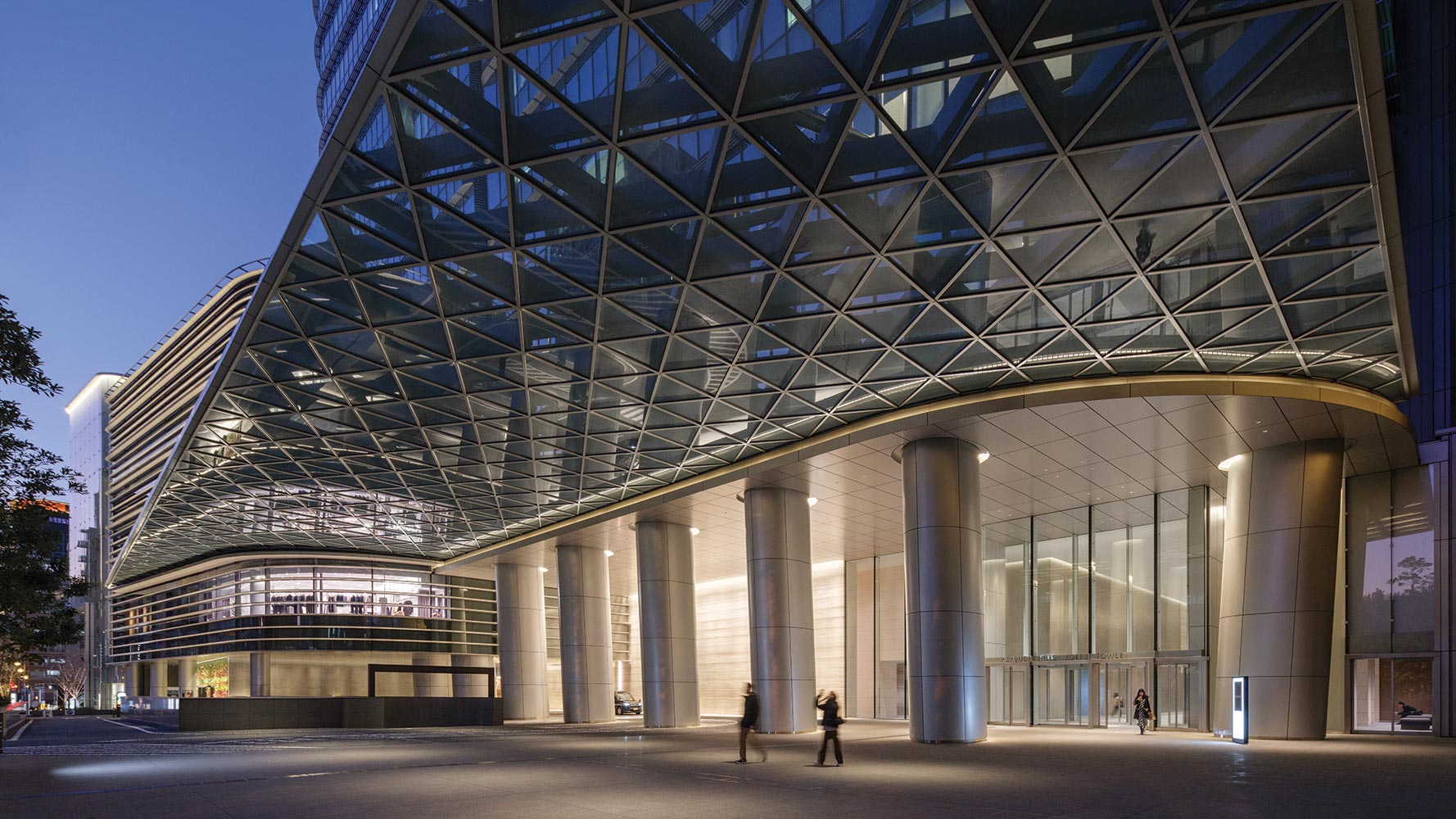Subtle Moves with Outsize Impact—Day and Night—Enhance Japan’s Tallest Building
Tokyo

A stone’s throw from Toranomon Hills Station Tower in Minato-ku, the ward in Tokyo that plays host to a suite of international company headquarters and national embassies, the Pelli Clarke & Partners–designed Mori JP Tower elegantly ascends to new heights—literally. At 1,083 feet, the building is the tallest skyscraper in Japan (only two communications structures surpass it in height) and represents the pinnacle of a 30-year relationship between architect and client, Mori Building.
Mori JP Tower forms the centerpiece of a mixed-use, three-tower urban village called Azabudai Hills, master-planned by PC&P but with smaller-scale architectural contributions by Thomas Heatherwick and Sou Fujimoto, among others.

Four vertical channels break up the skyscraper’s volume. Photo © Jason O’Rear, click to enlarge.
Measuring 267 feet square at its thickest—wider than a Manhattan block—Mori JP Tower would have appeared staggeringly stout without the help of a few design moves with big impact, reinforced in the evening by L’Observatoire International’s lighting scheme. The bulky height-to-width ratio prompted the introduction of a vertical channel down the middle of each face, rendering the otherwise singular tower into a bundle of four narrower volumes. The tower softly billows, like entasis, tapering at the base and toward its petal-like crown. Rounded corners add to the visual trickery at play, as does highly transparent low-iron glass, which gives the tower a silvery cast akin to a Mikimoto pearl, says Fred Clarke, partner at PC&P. “It has a commanding but still quiet presence.”
But, as L’Observatoire founder Hervé Descottes notes, “our cities live at night.” Tokyo is incredibly bright, he adds, while also pointing out that very few towers have lit crowns. “It’s important that they connect with people and serve as locators.”
Although 48 floors of Mori JP Tower were planned as leasable office space, the top 10 levels house Aman Resorts–branded residences. To ensure that the apex would glow without affecting these units, programmable LEDs were installed inside the glass-clad spandrels between floors. Concealed LEDs also illuminate the vertical channels, reinforcing the quadripartite expression of the facade at night but with an important twist: these bands of light dim toward the ground, creating a sense that the four wedges are opening—like a flower bud beginning to blossom. The lighting scheme at the crown may seem understated when compared to the intense brightness of nearby landmarks, such as Tokyo Tower, but it establishes a rare identifiable symbol in Minato-ku.

Downlights wash columns and walls. Photo © Jason O’Rear
At the ground level, a louvered streetside plinth echoes the scale of the surrounding context. Uplights, integrated into every fifth fin, illuminate the undersides, while downlights wash other surfaces—a rounded-glass corner entrance filled with plants, or massive sloped columns near the office entrance—to dramatic effect.
“We see tall buildings as the intermediary between heaven and earth,” Clarke adds. “That’s what César Pelli always used to say.” Record-setting achievement notwithstanding, Mori JP Tower cuts an elegant, if still weighty, figure across the Tokyo skyline—day or night.




